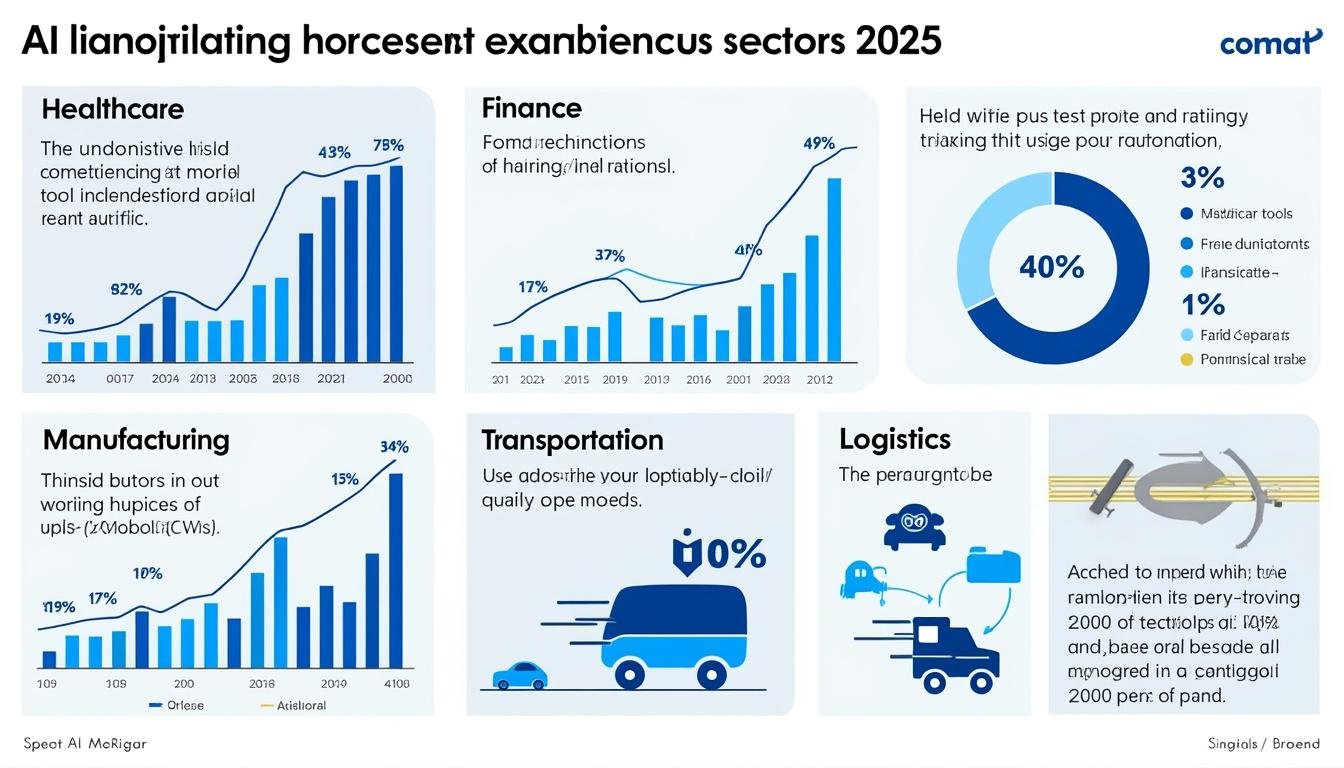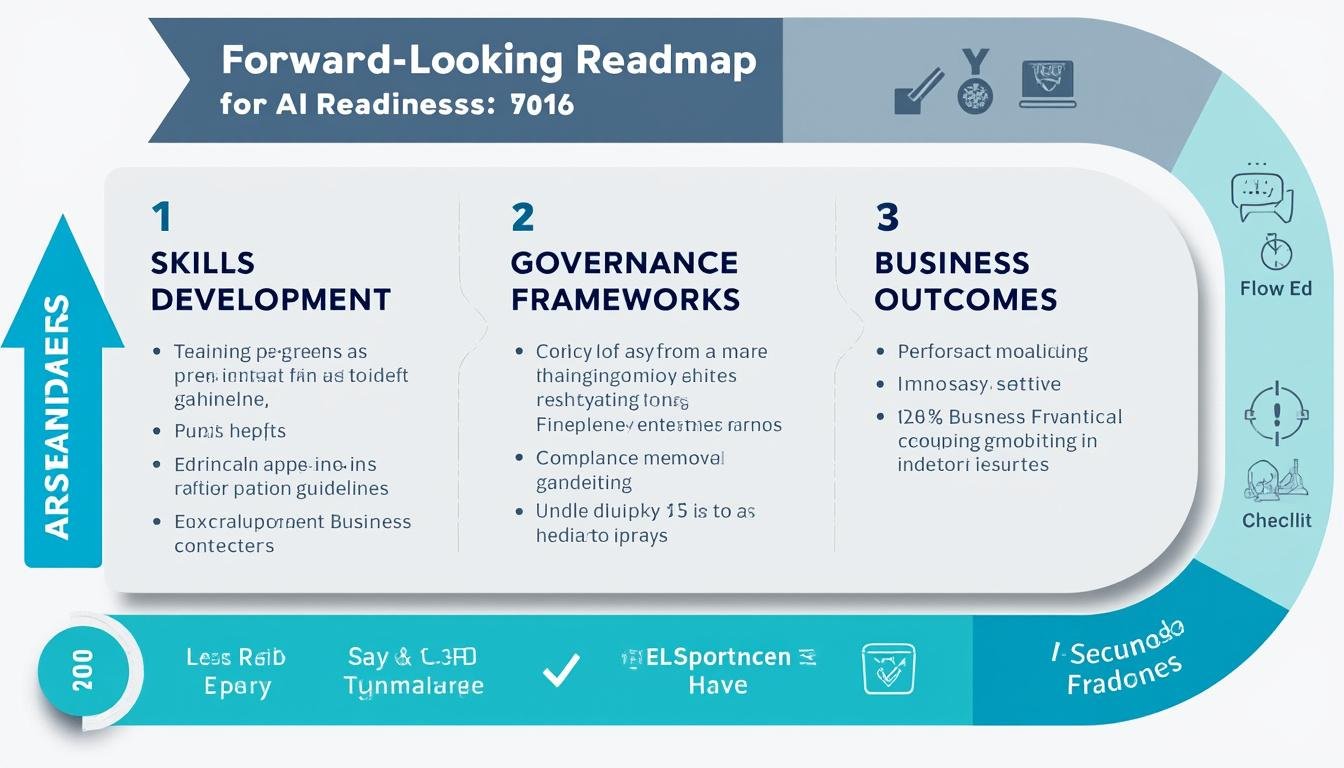En bref:
– 2025 marks a turning point where AI moves from experimental pilots to broad, revenue-generating deployments across healthcare, manufacturing, and services.
– Enterprise AI governance, data protection, and model safety are becoming as mission-critical as performance.
– Ecosystems around platforms, tooling, and shared knowledge accelerate momentum, with open exchanges across TechCrunch, VentureBeat, Wired, and MIT Technology Review shaping best practices.
– Real-world ROI is increasingly measurable: faster decision cycles, higher customer satisfaction, and streamlined operations are common outcomes.
– The AI news ecosystem remains rich: industry outlets such as The AI Report, Towards Data Science, Synced, Algorithmia Blog, OpenAI Blog, and DeepMind Blog are essential touchpoints for practitioners and leaders alike.
Artificial intelligence in 2025 stands at a moment of consolidation and expansion. The most visible shifts are not only technical breakthroughs but also the way organizations organize for AI: data governance matures, experimentation accelerates through transparent platforms, and business leaders demand reproducible value. The landscape is shaped by a chorus of trusted voices—from major outlets like TechCrunch and Wire to specialist journals such as MIT Technology Review and The Algorithmia Blog—that translate complex research into actionable insights for teams working on real problems. As AI becomes embedded in product strategy, marketing, and operations, the discipline broadens to include ethics, risk management, and explainability as core competencies. In this collection, we explore the threads connecting research advances to practical implementation, the ecosystems fueling rapid development, and the governance practices that help enterprises scale responsibly. Expect case studies, practical playbooks, and analyses that bridge theory and practice for 2025 and beyond.
AI Adoption and Practical Breakthroughs in 2025
In 2025, AI adoption is no longer about novelty; it’s about scalable, repeatable value. Across sectors, teams are combining foundation models with domain-specific knowledge to deliver tailored solutions—without sacrificing governance or security. In health care, for example, AI-assisted diagnostics and personalized treatment planning are reducing turnaround times and expanding access to expert insights, while manufacturers leverage AI to optimize supply chains, predictive maintenance, and quality control with near real-time feedback loops. The shift to production-ready AI pipelines is underpinned by improved data curation, model testing, and monitoring capabilities that help organizations manage risk as they scale. This evolution is visible in the way major media outlets report on AI: outlets like TechCrunch and VentureBeat frequently profile practical deployments rather than purely theoretical work, signaling a pragmatic commercialization of AI capabilities. Meanwhile, Think-tank-style analyses in Wired and MIT Technology Review emphasize responsible AI design, safety, and the human-in-the-loop aspects that keep deployments trustworthy.
Within this landscape, several drivers shape outcomes. First, the cost-per-iteration of model development has declined thanks to better tooling, shared datasets, and more capable pre-trained models, enabling teams to move from pilots to production faster. Second, organizations are standardizing on modular architectures that allow rapid experimentation across use cases while maintaining governance controls. Third, the supplier ecosystem—ranging from cloud providers to niche AI startups—has matured, creating an enabling environment for both large-scale transformations and bespoke applications. These shifts are well documented in industry coverage from The AI Report and Towards Data Science, which highlight both the opportunities and the risks that accompany rapid deployment. Finally, practical case studies across sectors illustrate measurable ROI, from improved patient outcomes to reduced downtime in manufacturing.
- Scale-ready platforms with integrated data governance and monitoring capabilities are becoming the default choice for enterprises seeking reliability and speed.
- Domain-specific AI solutions—tailored with enterprise data—outperform generic models in accuracy and relevance for mission-critical tasks.
- Responsible AI practices are no longer optional; they are embedded in procurement, development, and deployment workflows.
- Knowledge exchange through blogs and reports from TechCrunch, VentureBeat, Wired, and MIT Technology Review helps teams stay current with practical guidance.
- Open dialogue on safety and bias mitigation is increasingly central to procurement decisions and organizational readiness.
| Aspect | 2025 Context | Business Impact |
|---|---|---|
| Data governance | Stricter access controls, lineage tracing, and policy-driven data use | Reduced risk, improved compliance, and higher-quality inputs |
| Model lifecycle | Continuous evaluation, automated testing, and drift monitoring | Lower maintenance costs, steadier performance |
| Platform ecosystems | Consolidated tools for training, deployment, and monitoring | Faster time-to-value and simpler talent alignment |
| Safety and ethics | Clear governance, bias audits, and explainability requirements | Greater stakeholder trust and smoother regulatory alignment |
Practical deployments illustrate the trend toward measurable ROI. In service industries, AI-driven chat and automation reduce response times and free human agents for higher-value work. In manufacturing, predictive maintenance avoids unplanned downtime and extends asset life. In healthcare, AI-assisted triage and image analysis shorten wait times and improve diagnostic confidence. These patterns are reported across industry press and analyses, reinforcing the view that AI is becoming a capability that many organizations must master, not merely a niche competence. For those seeking credible, policy-relevant perspectives on these developments, the OpenAI Blog and DeepMind Blog provide useful context, while reviews from Synced and Algorithmia Blog help translate technical advances into business terms.

Practical pathways to production
Enterprises increasingly follow a pragmatic pipeline to move from pilots to production:
- Stage-gate governance that separates experimentation from production, with guardrails for data use and privacy.
- Standardized model templates and evaluation rubrics to accelerate validation across departments.
- Robust monitoring dashboards that track performance, data quality, and drift in real time.
- Clear ownership and accountability mapped to business outcomes rather than purely technical metrics.
Leaders can draw lessons from foundational coverage across major outlets—TechCrunch, VentureBeat, Wired, and MIT Technology Review—while integrating practical guidance from industry blogs and community resources. The aim is to achieve reliable value while maintaining responsible AI stewardship, a balance increasingly emphasized in enterprise strategy meetings and board-level discussions. For readers seeking a curated stream of updates, the following links provide ongoing context: Exploring the Latest Innovations in AI: Hub for Insights, Insights and Innovations in AI Blog Articles, Insights and Trends in AI: Collection, Your Guide to the Latest AI Blog Articles, Explore the Latest AI Articles.
AI Ecosystems: Platforms, Tools, and Shared Knowledge
The AI ecosystem in 2025 is defined by platforms that knit together data, models, and operations with a strong emphasis on reproducibility and collaboration. Enterprises rely on cloud-native platforms that integrate data labeling, training, deployment, and monitoring in a single workflow. The ecosystem is not homogeneous; it blends public cloud offerings, research-driven tools, and community-driven innovations. OpenAI Blog, DeepMind Blog, and MIT Technology Review illustrate how platform choices affect capability and speed of delivery, while industry watchers at TechCrunch and The AI Report track the competitive landscape and regulatory implications. This cross-pollination creates a vibrant feedback loop: practitioners test new ideas, publish lessons learned, and influence vendor roadmaps. For teams, the practical implication is a need to harmonize governance with speed, ensuring that experimentation remains compliant and auditable as it scales.
To operationalize this ecosystem, teams typically adopt modular pipelines and standardized interfaces. This reduces the risk of vendor lock-in while preserving the flexibility to experiment with best-in-class components. A core focus is on MLOps practices: continuous integration and deployment of models, automated tests for accuracy and fairness, and robust monitoring for drift detection. Community knowledge flows through multiple channels, including blogs, newsletters, and cross-company collaborations. The literature from Towards Data Science and Synced often translates technical breakthroughs into practical playbooks, which leaders can adapt to their own contexts. At the same time, governance considerations remain central: data provenance, access controls, and audit trails are no longer differentiators but baseline requirements for enterprise AI.
- Platform selection is driven by interoperability and the ability to integrate with existing data pipelines.
- Experimentation frameworks must balance speed with safety, ensuring reproducible results and auditable outcomes.
- Open-source contributions and community knowledge sharing accelerate learning and reduce time-to-value.
- Security and privacy are embedded in the core lifecycle, not treated as post-deployment concerns.
Practical guidance for teams includes leveraging model cards and risk assessments to communicate capability and limitations to stakeholders. The industry press remains a valuable compass; readers can follow OpenAI Blog for model-usage policies, or DeepMind Blog for research-to-application narratives. Additionally, coverage from MIT Technology Review helps frame the broader social and regulatory implications of platform-driven AI adoption.
Tools, datasets, and reproducibility
Successful teams curate a toolbox of trusted tools for data labeling, experiment tracking, and model evaluation. Reproducibility rests on clean data pipelines, versioned datasets, and transparent reporting. Datasets that are carefully curated and labeled enable models to generalize better and reduce bias in production. Across publications, practitioners share code samples, best practices, and case studies that demonstrate how to achieve reliable results while maintaining governance. The ongoing dialogue across journals and blogs—ranging from The AI Report to Algorithmia Blog—helps translate this technical material into pragmatic playbooks that organizations can adapt to their unique contexts. For readers seeking a curated set of sources, consider these anchors: Engaging AI Blog Articles, Articles on AI Developments, and Informative AI Blog Articles.
Ethics, Safety, and Governance in AI Practice
Ethics and governance are now part of the standard operating playbook for AI initiatives. Organizations increasingly adopt structured risk assessments, bias audits, and explainability requirements as a condition for project funding and executive sponsorship. The ethical dimension is not abstract; it translates into measurable action: transparent data use policies, inclusive training data, and the ability to audit model decisions. Scholarly and industry voices—such as DeepMind Blog, MIT Technology Review, and Wired—underscore that safety cannot be an afterthought. In real-world deployments, governance becomes a lever for trust: it reduces compliance friction with regulators and helps preserve customer confidence as AI systems operate in sensitive domains. As organizations strive to scale responsibly, they develop governance playbooks that specify who approves data usage, how models are tested for bias, and how impact is measured across stakeholders.
- Establishing clear accountability for AI decisions, including escalation paths for human-in-the-loop interventions.
- Implementing bias checks and fairness metrics as standard parts of the development lifecycle.
- Maintaining transparency with stakeholders through model documentation and accessible explainability tools.
- Aligning AI initiatives with regulatory expectations and industry best practices.
| Governance Area | Practice | Effect |
|---|---|---|
| Data privacy | Role-based access, data minimization, differential privacy where applicable | Safer data handling and customer trust |
| Model safety | Red-teaming, adversarial testing, robust monitoring | Fewer unexpected failures and safer deployments |
| Explainability | Interpretable outputs, decision reasoning, auditable trails | Better stakeholder understanding and trust |
For governance guidance, practitioners consult a mix of sources, including MIT Technology Review, Synced, and The AI Report. These outlets help organizations translate high-level ethics into operational checklists and risk management practices. They also provide case studies in which governance improvements led to smoother audits and more durable AI partnerships, a pattern that appears repeatedly in 2025 industry narratives.
Business Value, ROI, and Real-World Case Studies
Understanding the business value of AI requires a disciplined approach to ROI, not just a collection of impressive metrics. In 2025, leaders emphasize outcomes: faster decision cycles, improved customer experiences, cost savings through automation, and higher asset utilization. The most compelling stories combine quantitative gains with qualitative improvements, such as enhanced employee productivity and better strategic visibility across the organization. Across sectors—from retail to logistics to healthcare—organizations report faster time-to-market for AI-enabled products, more accurate forecasting, and increased agility in responding to market shifts. Industry commentary from TechCrunch, VentureBeat, and OpenAI Blog frequently highlights these value drivers and the ways teams structure programs to maximize impact while keeping risk in check.
- ROI often emerges from a blend of throughput gains, cost reductions, and improved risk management.
- Key metrics include time-to-insight, end-to-end cycle time, and the quality of decisions enabled by AI outputs.
- Organizations increasingly tie AI initiatives to strategic KPIs such as customer retention, lifetime value, and operational uptime.
- Successful case studies combine a clear plan, a replicable template, and measurable governance milestones.
ROI storytelling benefits from concrete examples. A financial services team reduced manual reconciliation time by a third, while a manufacturing line cut unplanned downtime by a meaningful margin through predictive maintenance. A healthcare network improved triage speed and imaging analysis accuracy, translating into shorter patient waits and better outcomes. These stories, reported across the industrial and tech press, provide patterns that other teams can imitate. For readers who want a curated view of business-focused AI analyses, resources from a hub for insights and articles and engaging blog articles offer practical perspectives for executives and practitioners alike.
The Future of AI: Predictions, Skills, and Organizational Readiness
Looking ahead, 2026 and beyond will be shaped by the continuing maturation of AI capabilities and the increasing demand for responsible, scalable deployments. Organizations will invest in talent and training to ensure teams can design, deploy, and govern AI systems effectively. The skill set required expands beyond data scientists to include data engineers, product managers, and ethics officers who can translate technical risk into business decisions. The best organizations will blend research-driven insights with pragmatic execution, applying lessons from Synced and Towards Data Science to build playbooks that scale. In practice, this means adopting a lifecycle mindset: from data collection and model development to deployment, monitoring, and continuous improvement—always with governance baked in. The conversation about AI’s future is not only about what is possible; it is about what is responsible, auditable, and valuable to customers and society.
- Organizations will codify AI capability into product and platform roadmaps, with clear milestones and governance gates.
- Talent development will focus on cross-disciplinary teams that join engineering, domain expertise, and ethics.
- Industry collaboration will grow, with shared benchmarks and open datasets that improve comparability and trust.
- Regulatory foresight will guide architecture choices and data handling practices, reducing friction in large-scale deployments.
To connect with forward-looking perspectives, consider how industry voices frame the coming years. The Wired and MIT Technology Review provide ongoing scenarios and risk assessments, while OpenAI Blog and DeepMind Blog offer practical notes on how to implement safety-first AI programs within growing organizations. For teams seeking structured guidance, a curated set of articles is available at Insights and Innovations—Latest Articles on AI and Collection of Informative AI Articles.

FAQ
What are the most reliable sources for AI news in 2025?
Reliable sources include TechCrunch, VentureBeat, Wired, and MIT Technology Review, complemented by specialized blogs like The AI Report, Towards Data Science, Synced, Algorithmia Blog, OpenAI Blog, and DeepMind Blog. Regular readers also follow platform-related updates from OpenAI, DeepMind, and major cloud providers.
How should an enterprise start with scalable AI in 2025?
Begin with governance-aligned pilots, invest in modular pipelines, ensure data quality and privacy from day one, and establish a clear path to production with measurable KPIs. Build cross-functional teams that include engineering, data science, product, and ethics, and use a repeatable playbook that can be scaled across departments.
What role do ethics and safety play in production AI?
Ethics and safety are foundational, not optional. They drive risk assessments, bias audits, explainability, and accountability. Organizations embed these practices into the model lifecycle, governance gates, and procurement criteria to maintain trust and regulatory compliance.
Where can I find practical AI playbooks and case studies?
Look to industry outlets like TechCrunch, MIT Technology Review, and The AI Report, plus practitioner-focused blogs on Towards Data Science, Synced, and Algorithmia. Company case studies and open-source repositories also provide concrete, reusable patterns for deployment.




